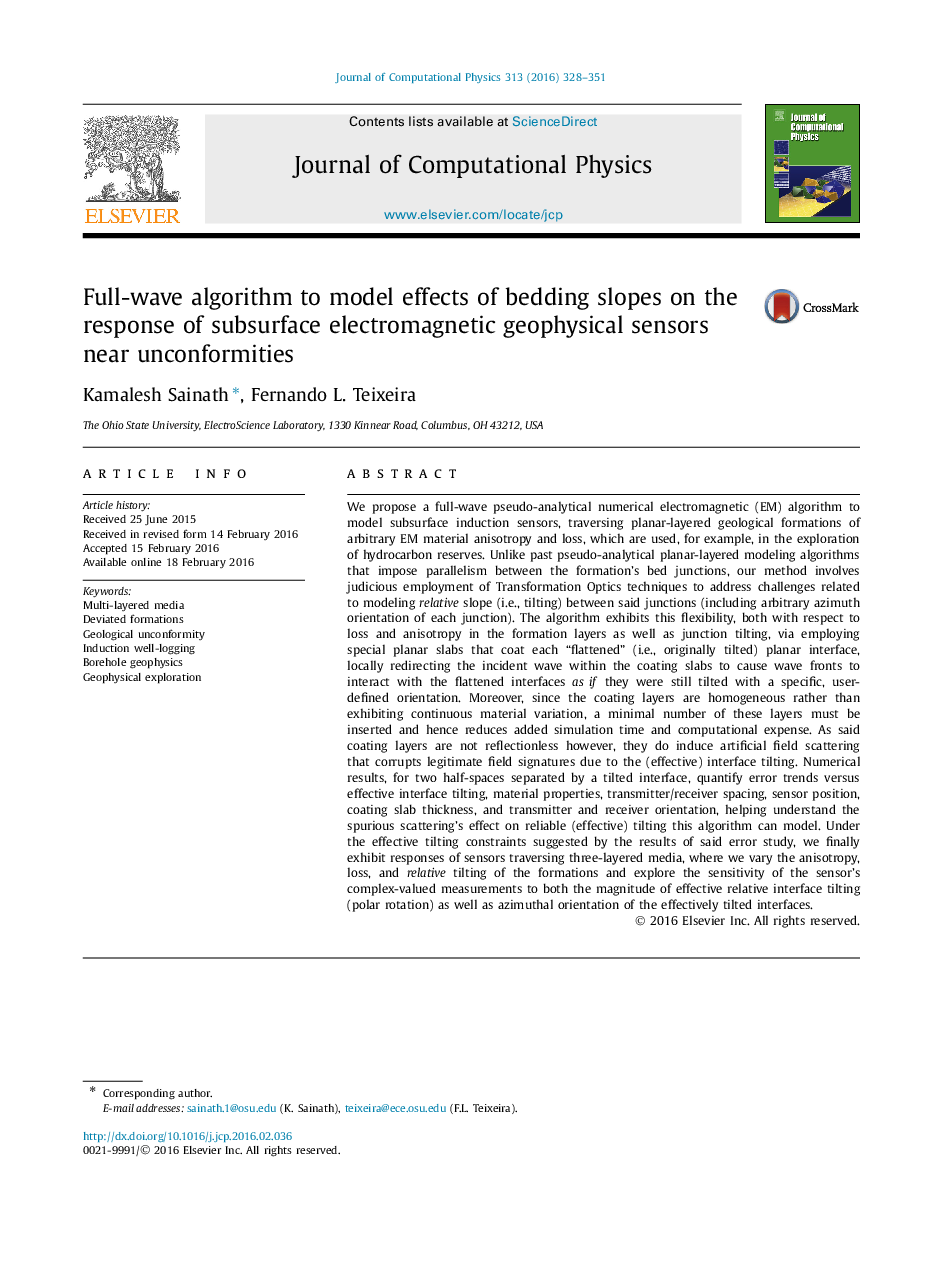| Article ID | Journal | Published Year | Pages | File Type |
|---|---|---|---|---|
| 519566 | Journal of Computational Physics | 2016 | 24 Pages |
Abstract
We propose a full-wave pseudo-analytical numerical electromagnetic (EM) algorithm to model subsurface induction sensors, traversing planar-layered geological formations of arbitrary EM material anisotropy and loss, which are used, for example, in the exploration of hydrocarbon reserves. Unlike past pseudo-analytical planar-layered modeling algorithms that impose parallelism between the formation's bed junctions, our method involves judicious employment of Transformation Optics techniques to address challenges related to modeling relative slope (i.e., tilting) between said junctions (including arbitrary azimuth orientation of each junction). The algorithm exhibits this flexibility, both with respect to loss and anisotropy in the formation layers as well as junction tilting, via employing special planar slabs that coat each “flattened” (i.e., originally tilted) planar interface, locally redirecting the incident wave within the coating slabs to cause wave fronts to interact with the flattened interfaces as if they were still tilted with a specific, user-defined orientation. Moreover, since the coating layers are homogeneous rather than exhibiting continuous material variation, a minimal number of these layers must be inserted and hence reduces added simulation time and computational expense. As said coating layers are not reflectionless however, they do induce artificial field scattering that corrupts legitimate field signatures due to the (effective) interface tilting. Numerical results, for two half-spaces separated by a tilted interface, quantify error trends versus effective interface tilting, material properties, transmitter/receiver spacing, sensor position, coating slab thickness, and transmitter and receiver orientation, helping understand the spurious scattering's effect on reliable (effective) tilting this algorithm can model. Under the effective tilting constraints suggested by the results of said error study, we finally exhibit responses of sensors traversing three-layered media, where we vary the anisotropy, loss, and relative tilting of the formations and explore the sensitivity of the sensor's complex-valued measurements to both the magnitude of effective relative interface tilting (polar rotation) as well as azimuthal orientation of the effectively tilted interfaces.
Related Topics
Physical Sciences and Engineering
Computer Science
Computer Science Applications
Authors
Kamalesh Sainath, Fernando L. Teixeira,
